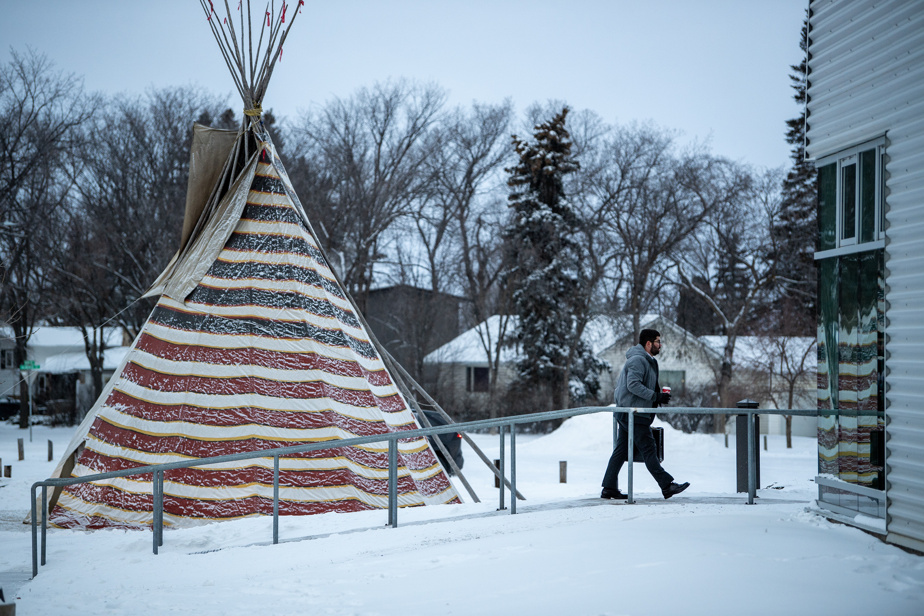(Melfort) An ambulance rushed to a home to treat a stabbing victim as a massacre unfolded in a Saskatchewan First Nation. But other emergency medical vehicles went to the band office. This is what a coroner’s inquest revealed on Monday.
“There were a lot of patients, especially in the beginning, (and) there weren’t a lot of paramedics on site,” said Sherri Julé, director of emergency medical services for northern Saskatchewan, during the the investigation in Melfort.
Mme Julé explained how paramedics rushed to the scene of the stabbing on September 4, 2022. Myles Sanderson killed 11 people and injured 17 others in James Smith First Nation and the neighboring village of Weldon , northeast of Saskatoon.
Sanderson died in custody a few days later.
A call came in at 5:44 a.m. saying paramedics may be needed at the First Nation, the investigation said.
Mme Julé said an ambulance from Melfort was dispatched 17 seconds later and arrived at the First Nation at 6:23 a.m. Three people, two of them seriously injured, arrived at Melfort hospital at 8:17 a.m.
Shortly after this first call, the investigation revealed that there had clearly been many injuries and that the killer was at large.
Sherri Julé said ambulances were stationed at the band office, where police and a conservation officer could provide security.
“(The paramedics) felt very safe because of the police presence,” she said, adding that the injured were taken to the band office by community members or officers.
The investigation aims to establish the events leading up to the murders, who died, and when and where each person was killed. The jury, made up of six people, can also make recommendations to prevent similar deaths.
Mme Julé said all three STARS air ambulances in Saskatchewan responded. Ambulances were sent from Melfort, Tisdale and Prince Albert.
Sixteen patients were treated, she said, and all survived.
“We’ve never had anything of this magnitude”
The second week of the coroner’s inquest began with testimony about how the province responded to the stabbings.
Inspector Alex Heron, of Provincial Protective Services, said 53 members of the branch were called to the scene over four days, including highway patrol officers and conservation officers.
“We’ve never had anything of this magnitude before,” Mr Heron said.
The inquest was scheduled to hear testimony from the province’s Warrant Enforcement Team (WEST) later Monday.
An RCMP overview of the massacre indicates Sanderson went to the First Nation to sell cocaine. In the days before the murders, he had caused chaos with his brother, Damien Sanderson.
Damien Sanderson was the first to be killed. Staff Sergeant Carl Sesely, an RCMP criminal profiler, told the inquest Friday it was because he was embarrassing his brother.
Myles Sanderson then went from house to house in the community, stabbing and killing people. Mr Sesely said some victims were targeted because Sanderson believed they were associated with a gang. Others got in the way of his “mission,” Mr. Sesely said.
The investigation revealed that Sanderson had a history of violence and incarceration. His criminal history included 59 convictions as an adult. He was illegally at large at the time of the murders.
Criminal investigations psychologist Matt Logan told the inquest last week that Sanderson had many psychopathic traits.
Drawing on court and prison records, as well as community members, Mr. Logan described Sanderson as having had an unstable childhood marked by abuse. Sanderson struggled with alcohol addiction and used methamphetamine and cocaine.
His common-law wife, Vanessa Burns, also testified to 14 years of domestic violence at the hands of the father of her five children. The inquest heard how Sanderson repeatedly attacked her while she was pregnant.
A second inquest into the killer’s death is planned for February.
The victims’ families say the investigation was difficult.
Deborah Burns, whose father, Earl Burns Sr., was killed, said Friday it has been exhausting. But “I feel like I’m getting answers.”
